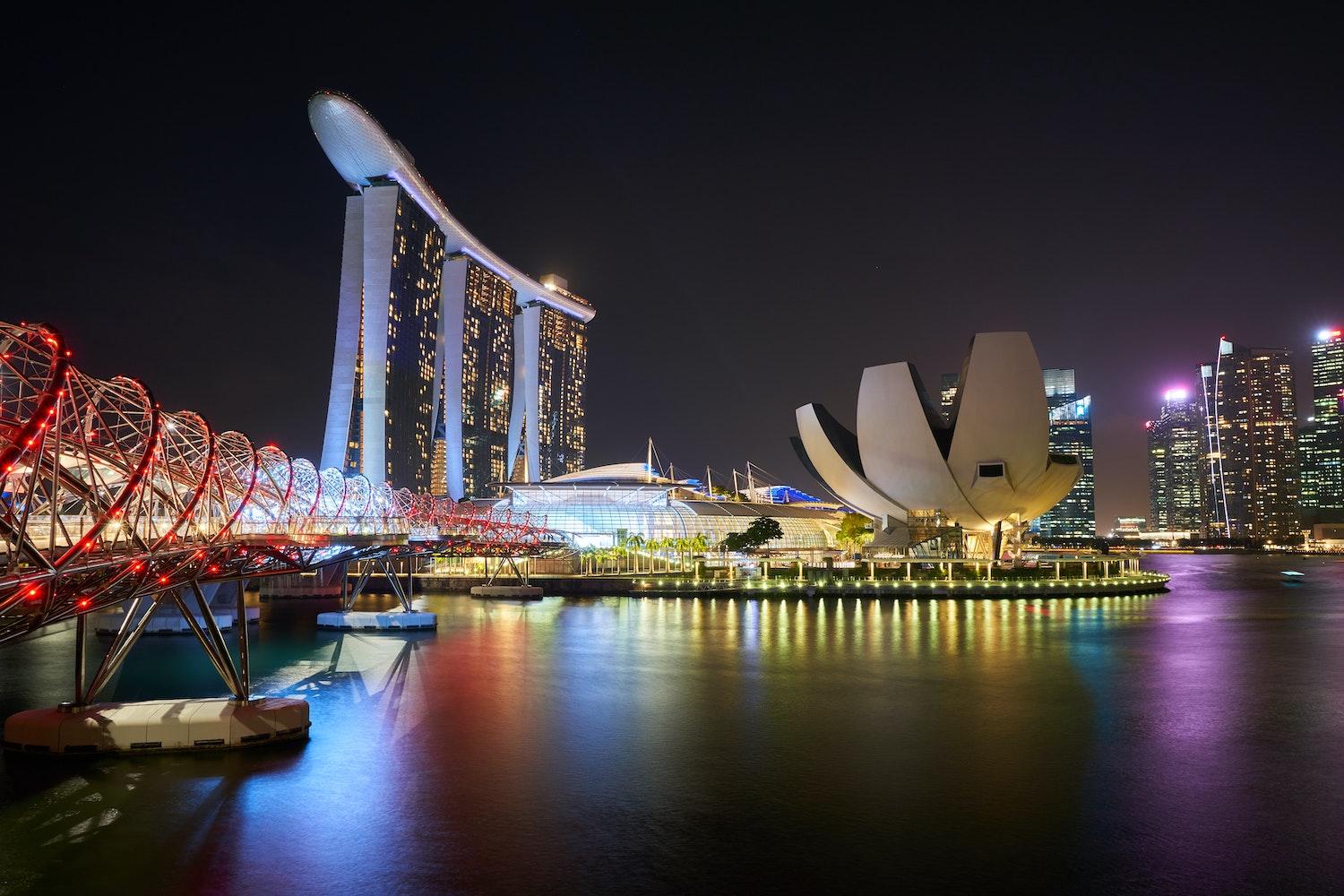
The skyline around the Gardens by the Bay nature park in the Central Region of Singapore.
As the United Nations COP28 climate talks approach, wealth and resource inequality remains a glaring blindspot in international climate action strategies. To meet global climate goals, the developing and emerging economies most vulnerable to climate change will need to see massive increases in clean energy investment, according to the International Energy Agency (IEA).
"Annual clean energy investments in emerging and developing economies will need to more than triple from $770 billion in 2022 to as much as $2.8 trillion by the early 2030s to meet rising energy needs and align with the climate goals set out in the Paris Agreement," the IEA found in a June report.
Public investment cannot bridge this gap alone. Meeting international benchmarks also requires massive mobilization of private capital.
Singapore’s government and financial institutions recognize this need. The country leverages green finance plans — including public-private partnerships and carbon trading — to help not only itself but also the rest of Southeast Asia meet their climate change contributions.
Becoming a leader in green finance
Singapore launched its Green Plan 2030 in 2021, which lays out a roadmap for commitment to the U.N.'s 2030 Sustainable Development Agenda as well as the Paris Agreement on climate change. A collaboration between the Ministries of Education, National Development, Sustainability and the Environment, Trade and Industry, and Transport, the plan establishes concrete targets across these sectors through as far as 2040.
Targets for 2030 include Singapore becoming an Asian carbon services hub and “a leading center for green finance and services to facilitate Asia’s transition to a low-carbon and sustainable future,” the plan reads.
This past spring, Singapore’s central bank — the Monetary Authority of Singapore — assembled an outline for government efforts to drive green finance through the Finance for Net Zero Action Plan, which is an expansion of its 2019 plan.
The bank’s approach focuses on “promoting consistent, comparable, reliable climate data disclosure; engaging financial institutions to support risk management; science-based transition plans; and more,” said Bo Bai, chairman and co-founder of the Singapore-based financial technology company MVGX Holdings.
In green finance public-private partnerships, for example, the government sets policy guidelines. Then, financial regulators offer financial institutions and other organizations support and advice on cooperating with those guidelines.
On the private side, companies can then begin the process of measuring carbon emissions across different operating scopes, mitigating emissions, offsetting emissions often through carbon credits, certifying emissions reductions to ensure they meet international standards, and financing the new scope, Bai said.
Leveraging international partnerships responsibly
In 2022, Singapore signed memorandums of understanding to collaborate with Vietnam, a fellow Association of Southeast Asian Nations (ASEAN) member state, on energy and carbon credits. The memorandums underscore the nations’ commitment to shared progress toward climate resilience and Southeast Asia’s overall decarbonization through efforts including financing renewable energy, increased cross-border electricity trade, and carbon credit pilot programs.
Leveraging international partnerships is an important opportunity for global decarbonization, for which each nation under the Paris Agreement commits to support through its Nationally Determined Contribution. Cross-border carbon trading opens up a host of important accountability questions, which regional partnerships like those in Singapore and Southeast Asia must navigate responsibly.
“For example, if you have a Thailand carbon project's generated corporate credit, when the owner of a source of carbon credit sells these to a buyer, say, in Singapore: Is this going to be counted as Thailand’s carbon emission reduction when they report to the United Nations, or is it going to be counted as Singapore's?” Bai said, citing Article 6 of the Paris Agreement.
Questions like these usher in possibilities for new infrastructure that demands accountability within green finance. Climate registries and auditing systems help regulate carbon markets by providing transparent accounting and issuing offsets, helping prevent the double-counting of carbon credits and offsets.
Not all countries, however, have national registries. And existing registries — whether national, private or international — did not effectively share their respective information efficiently. At the Asia-Pacific Petroleum Conference last September, the World Bank and the International Emissions Trading Association selected Singapore to anchor a decentralized metadata platform that consolidates existing climate registries representing 11 national governments and 30 organizations called the Climate Action Data Trust.
And Singapore continues to explore data and environment, social and governance (ESG) disclosure information through other international initiatives like the China-Singapore Green Finance Taskforce established in April.
Singapore's leadership in green finance not only sets a strong example of bilateral and regional climate partnerships but also, hopefully, marks a long-overdue flow of capital and expertise to emerging economies.
Image credit: Timo Volz/Pexels

Michelle is a freelance writer with experience in international nonprofit work, arts and culture writing, and creative copywriting. She is particularly devoted to stories that highlight cultural expansion and our interdependence.














